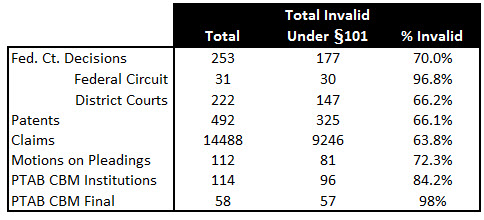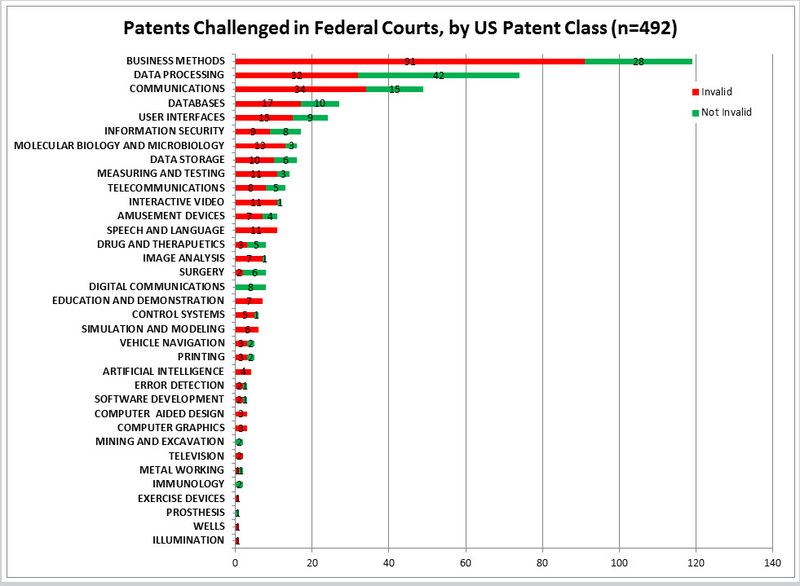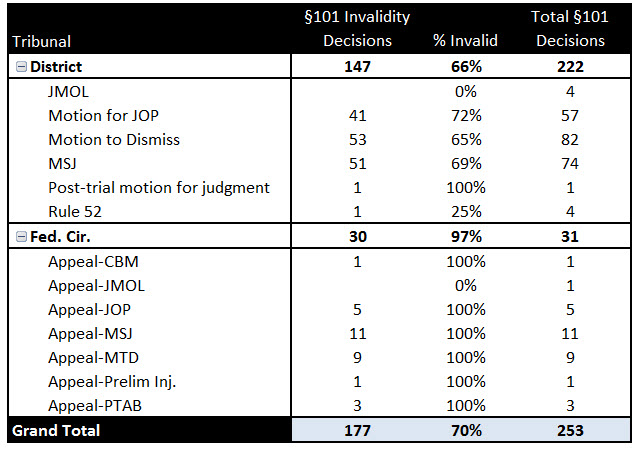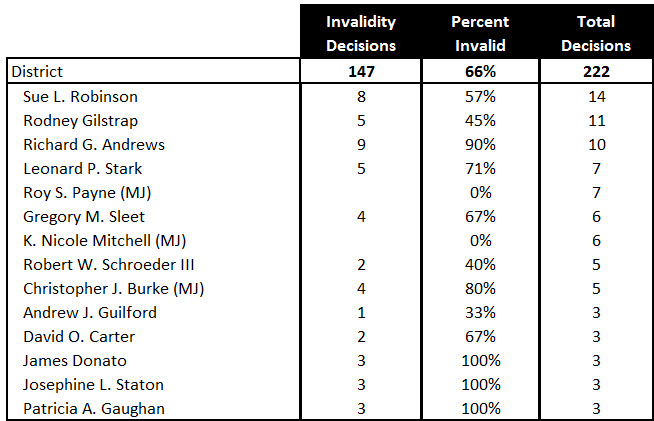
Here are the updated numbers for #Alicestorm in the first quarter of 2016.
First, the overall trend of decisions:
March 2016 is the first month since Alice was decided that the number of decisions upholding patents (15) exceed the number of invalidating decisions (12). However, this is not a sea change. Rather, it's an artifact of the data: on March 22, 2016, Judge Robinson (D. Del.) released four decisions denying motions to dismiss that had been pending for many months. The clustering of these four decisions spiked the numbers. More important is that underlying trend of invalidating decisions continues upwards.
The #Alicestorm counts are as follows:

The indices are more or less steady, though dipping slightly due mainly to the four Robinson decisions. The total number of invalidating decisions climbed from 150 in January to 177. Invalidated patents increased from 285 to 325 (17.5%) while the number of invalidated claims rose from 7,548 to 9,246 (22.5%). The ever popular motion to dismiss rate edged up from 71.7% to 72.3%.
The Federal Circuit continues to invalidate on a regular basis (up from 22 decisions). Most of these are per curiam decisions. Of particular note is the decision in In re Smith, where the court upheld the rejection of a claim directed to a method of blackjack gaming. The court agreed with the examiner that wagering on cards games is "a method of exchanging and resolving financial obligations." The USPTO has been waiting for this decision, as there are many gaming patent applications pending, facing precisely this kind of rejection; if you are prosecuting one of these applications, expect the rejection to be maintained on appeal. This development is unfortunate, since gaming patents are well within the scope of the traditional fields of patenting, going back at least to the patent on the game of Monopoly.
Here is the distribution of patents both held valid and invalid with respect to U.S. patent classifications.

Turning to the motions:

Here are the stats for all judges who have issued three or more Section 101 decisions:

Here is a comparison of how the Delaware courts compare to the E.D. Texas:

It's difficult to say whether we've reached a steady state as to the boundaries of patent eligibility. The high rates of ineligibility decisions is likely to incent patent defendants to continue to argue against more traditional types of software. At some point, the courts will likely say enough is enough, and start to hold the line. We have yet to see evidence that this is happening, but as this is April, hope springs eternal.